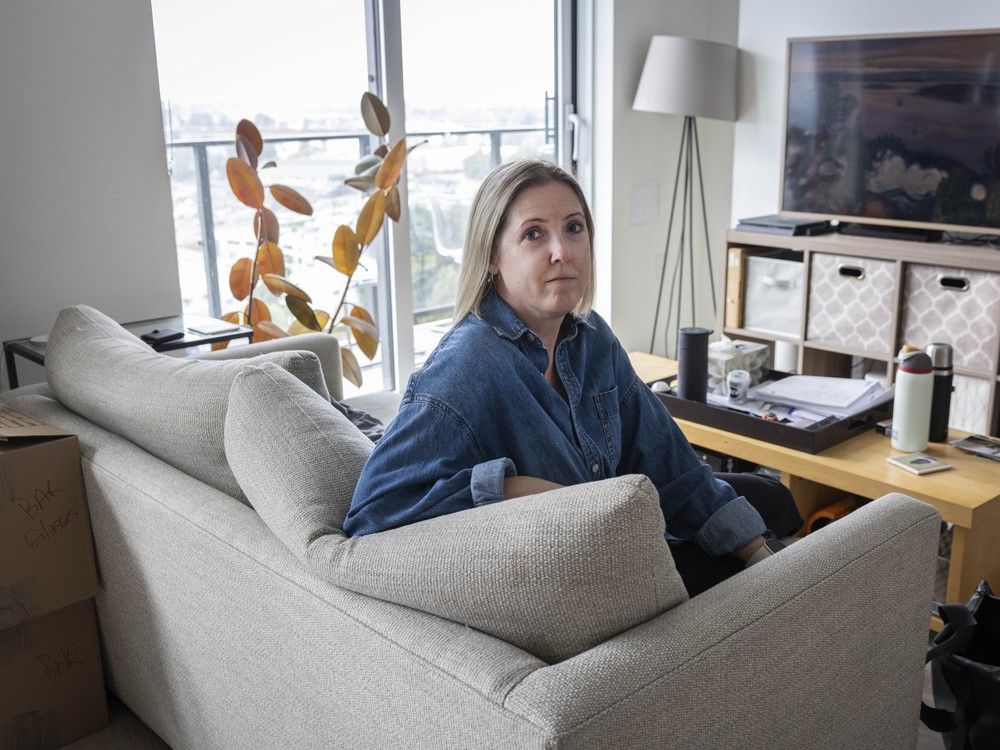
Vancouver’s Ashleigh Safarik and her 25-year-old son stepped into their new home at the Ashley Mar Housing Co-operative this week, returning to a familiar address that now looks nothing like the one they left four years ago.
What was once a cluster of 54 aging townhouses in South Vancouver has been transformed into three modern highrises — billed as the largest co-op housing redevelopment in Canadian history.
The redeveloped site at 8495 Cambie St. now features 108 co-op units, 524 market rental units and shared amenities such as a gym, playground and courtyard. The project is the result of a rare partnership between a non-profit housing co-operative and a private developer.
“My son was very sad about leaving his childhood home when we first moved out,” said Safarik, a single mother. “But as soon as we moved into our new unit, he said, ‘This is great! I want one of my own apartments here!’”
The Safariks are among 52 original households of Ashley Mar who have returned since August, each continuing to pay below-market rates.
Units were rebuilt to suit household needs. Co-op board member Aziz Ibrahim moved his family of seven into a new five-bedroom apartment.
“This is not just a building for us, it’s a community,” Ibrahim said. “And we have returned as an expanded community.”

Ashley Mar, established in 1983, has been collectively owned and managed by its members. However, as the buildings aged and property taxes increased, the co-op — having paid off its mortgage — began seeking a redevelopment partner to help sustain the site.
Seven years ago, members chose real estate developer Intracorp to lead the project, joined later in the venture by real estate investor Oxford Properties. The market rental portion of the new development helped finance expanded co-op housing.
During construction, relocated co-op members moved elsewhere, paying the same as in the old Ashley Mar, with Intracorp topping up their rent to the current market rate.
“I was able to afford going back to school full-time while my son was still in high school because of the housing subsidy,” said Safarik, 45. “The support made a huge difference.”
Redevelopment plans has meant the co-op had to take on another small mortgage.
The development’s market rentals — a mix of studio, one- and two-bedroom units — have also begun leasing, with 25 per cent already occupied.
Intracorp’s senior vice-president of development, Evan Allegretto, said the Ashley Mar co-op renewal could offer a guide for other non-profits facing aging infrastructure.
Allegretto said the Canada Mortgage and Housing Corporation contributed $22.8 million through a grant and a low interest loan to build the co-op portion of the project.
“I want this to be a new standard for redevelopment in the future, showing how private enterprise and community groups with a little bit of government help can do great things.”
Not everyone thinks the Ashley Mar model is easily replicated.
Craig Jones, associate director of the University of B.C.’s housing research collaborative, said this project had several unique advantages, including its ownership of the land and location near the Canada Line.
“This co-op is a special case,” said Jones. “It’s near transit and, most importantly, it owns its land — unlike many other co-ops.”
Jones notes that co-operative housing in Canada was largely built in the 1970s and ’80s with federal backing from the CMHC, but that support largely ended in the early 1990s.
“Co-ops in Metro Vancouver now represent just over one per cent of the housing stock,” he added.
Despite the long freeze in new co-op development, Jones sees early signs of revival, including new community land trusts initiating projects and renewed federal support. The CMHC recently offered $1.5 billion in forgivable and low-cost loans to the sector.
In B.C., programs like the rental protection fund have supported a couple of distressed co-ops facing the expiry of their land leases by purchasing the land to ensure long-term affordability.
Still, Jones said funding remains the biggest hurdle, especially for co-ops that lack assets to leverage for redevelopment.
“The co-op sector provides very viable housing, being that the profit motive is removed from housing,” he said, “but any significant expansion of non-market housing requires major investment.”